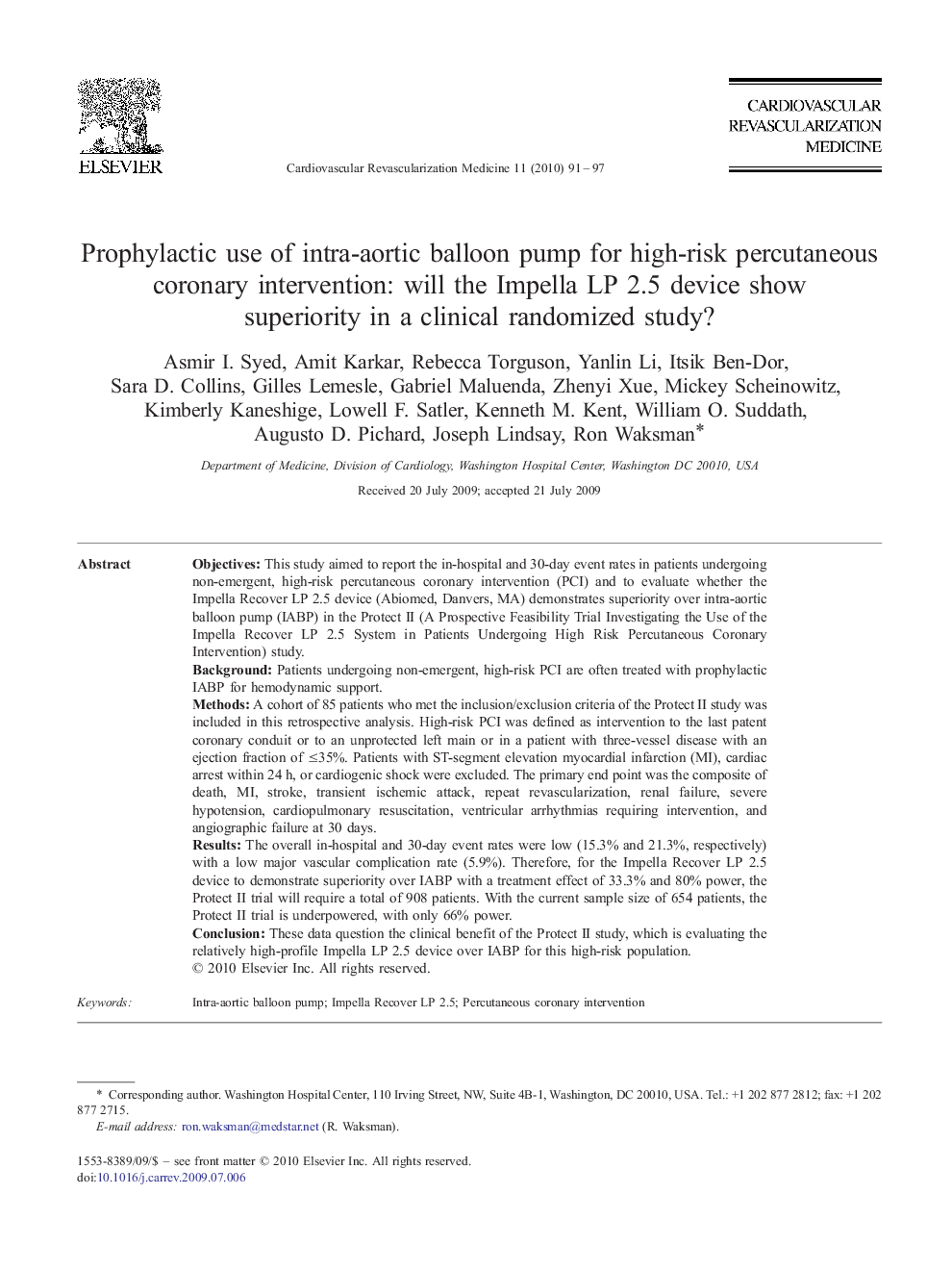| Article ID | Journal | Published Year | Pages | File Type |
|---|---|---|---|---|
| 2837426 | Cardiovascular Revascularization Medicine | 2010 | 7 Pages |
ObjectivesThis study aimed to report the in-hospital and 30-day event rates in patients undergoing non-emergent, high-risk percutaneous coronary intervention (PCI) and to evaluate whether the Impella Recover LP 2.5 device (Abiomed, Danvers, MA) demonstrates superiority over intra-aortic balloon pump (IABP) in the Protect II (A Prospective Feasibility Trial Investigating the Use of the Impella Recover LP 2.5 System in Patients Undergoing High Risk Percutaneous Coronary Intervention) study.BackgroundPatients undergoing non-emergent, high-risk PCI are often treated with prophylactic IABP for hemodynamic support.MethodsA cohort of 85 patients who met the inclusion/exclusion criteria of the Protect II study was included in this retrospective analysis. High-risk PCI was defined as intervention to the last patent coronary conduit or to an unprotected left main or in a patient with three-vessel disease with an ejection fraction of ≤35%. Patients with ST-segment elevation myocardial infarction (MI), cardiac arrest within 24 h, or cardiogenic shock were excluded. The primary end point was the composite of death, MI, stroke, transient ischemic attack, repeat revascularization, renal failure, severe hypotension, cardiopulmonary resuscitation, ventricular arrhythmias requiring intervention, and angiographic failure at 30 days.ResultsThe overall in-hospital and 30-day event rates were low (15.3% and 21.3%, respectively) with a low major vascular complication rate (5.9%). Therefore, for the Impella Recover LP 2.5 device to demonstrate superiority over IABP with a treatment effect of 33.3% and 80% power, the Protect II trial will require a total of 908 patients. With the current sample size of 654 patients, the Protect II trial is underpowered, with only 66% power.ConclusionThese data question the clinical benefit of the Protect II study, which is evaluating the relatively high-profile Impella LP 2.5 device over IABP for this high-risk population.
